Handheld Tools for Cutting Metal & Steel
- By Hanes Supply
- Oct 10, 2025
- 0 Comments
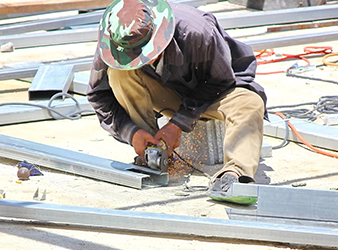
Cutting metal and steel by hand may seem intimidating, but with the right tools, techniques, and safety practices, it becomes an essential skill for both professionals and DIY enthusiasts. From industrial job sites to garage workshops, handheld tools offer flexibility, portability, and power when working with various metals. This comprehensive guide explores the most effective hand-powered and power tools for cutting steel and other metals, helping you choose the right one for your next project.
Hand Tools To Cut Metal
Although power tools frequently dominate modern fabrication and metalworking tasks, hand-powered tools continue to play an important role—especially for smaller jobs, field repairs, or when operating without electricity.
Hacksaws
The hacksaw is one of the oldest and most reliable hand tools for cutting metal. Its simple frame and replaceable toothed blade make it ideal for cutting through metal pipes, rods, bolts, and thin sheets. A fine-toothed blade (24–32 TPI) is better for thinner metals, while a coarser blade (14–18 TPI) can handle thicker stock. Although it requires more physical effort than power tools, the hacksaw’s affordability, precision, and portability make it essential in any toolbox. It's perfect for making clean, controlled cuts in tight spaces.
Metal Snips / Tin Snips
These are the preferred tools for cutting thin sheet metal, aluminum flashing, and HVAC ductwork. There are three types: straight-cut, left-cut, and right-cut. They function like heavy-duty scissors, allowing you to follow straight lines or tight curves effortlessly. Although they may leave jagged edges and aren't suitable for thick or hard metals, snips are lightweight and perfect for light-duty tasks.
Throatless Shears (Beverly Shears)
While these bench-mounted manual shears are not truly "handheld," they use a lever-style action to cut sheet metal efficiently. Their design allows for intricate curves without distorting the material. They are favored in metal fabrication shops where precision and consistency are essential, although they are not portable.
Handheld Nibblers
Nibblers cut metal by punching out small pieces as they move along the cut line. Manual nibblers require hand force but can create tight radii and intricate shapes with relative ease. They are excellent for cutting roofing panels, automotive body panels, and other thin-gauge sheet metals.
Jeweler’s Saws / Coping Saws
Although primarily designed for fine work or artistic metalworking, these tools excel at making precise, delicate cuts. Their fine blades can slice through soft metals like copper, brass, or aluminum, but they are not suitable for structural steel.
These tools may be simple; however, when used properly, they provide excellent control and finish quality—especially for precision cuts, tight spaces, or light-duty work.
Power Tools To Cut Metal
When time is limited or material is dense, power tools take the spotlight. These handheld tools offer speed, efficiency, and versatility for cutting metal and steel in different thicknesses and formats.
Angle Grinders
Angle grinders are among the most commonly used handheld power tools for cutting metal. When equipped with a cut-off wheel, they can make fast, aggressive cuts in steel pipe, rebar, sheet metal, bolts, and welds. Available in corded or cordless models, angle grinders are compact and easy to maneuver. They generate high heat and sparks, so appropriate safety gear must be worn. They’re ideal for rough cuts or demolition but may leave burrs or uneven edges.
Reciprocating Saws (Sawzall)
Reciprocating saws are powerful tools designed for aggressive, demolition-style cutting. With the appropriate metal-cutting blade, they can cut through steel studs, pipes, nails, or car body panels. They perform well in outdoor tasks, renovations, or situations where precise cuts aren't necessary. For best results, use a variable speed setting and bi-metal blades rated for ferrous or non-ferrous metals.
Portable Band Saws
Portable band saws are a favorite among electricians, plumbers, and fabricators because they provide clean, straight cuts with less heat and noise than grinders. They are ideal for cutting conduit, threaded rods, angle iron, and square tubing. Band saws leave a smoother edge and do not produce sparks, making them perfect for indoor use and precision cutting.
Circular Saws with Metal-Cutting Blades
Standard circular saws, when equipped with abrasive or carbide-tipped metal blades, can make quick, straight cuts in sheet metal, pipes, or plates. It is often advisable to use cutting fluid or lubricant to prevent overheating. These saws create fewer burrs than grinders but require a firm grip and careful alignment to avoid kickback.
Metal Cut-Off Wheels
Cut-off wheels are a fundamental component of many handheld power tools, particularly angle grinders and chop saws. These abrasive discs are engineered to slice through metal by grinding the material with high-speed rotation. They are available in various diameters, thicknesses, and bond types to accommodate different applications and tools.
Cut-off wheels are ideal for cutting rebar, sheet metal, bolts, angle iron, and pipe. Thin wheels (e.g., 1/16 in or thinner) are perfect for precise, burr-minimizing cuts, while thicker wheels provide greater durability for more demanding tasks. Always ensure that the wheel is rated for the tool’s RPM and matches the material being cut—using the correct wheel enhances performance and safety.
Rotary Tools (Dremel)
For fine detailing, small jobs, or cutting in tight spots, a rotary tool with reinforced cut-off wheels can be highly effective. These tools excel at trimming sheet metal, cutting screws, or modifying brackets. Their compact size allows for easy control, although they tend to operate more slowly and are best suited for light-duty tasks.
Plasma Cutters (Portable Units)
While they are more advanced, portable plasma cutters are handheld tools that can cut through thick steel with ease. They utilize a high-velocity jet of ionized gas to make clean, fast cuts with minimal distortion. These tools are ideal for fabrication, auto body work, or artistic metalworking, but they require an air compressor and proper electrical power to function.
Choosing the Right Tool: Factors to Consider
Choosing the right tool for your metal cutting task depends on several key factors:
Material Type and Thickness
• Thin sheet metals (like aluminum or stainless under 1/16 in) can be cut with snips, nibblers, or rotary tools.
• Thicker materials like rebar, angle iron, and structural steel require power tools such as grinders, bandsaws, or plasma cutters.
Cutting Precision
• For straight, clean cuts: band saws or circular saws with metal blades are best.
• For intricate or curved cuts: nibblers, rotary tools, or hacksaws provide more control.
• For fast, rough cuts: grinders and reciprocating saws are most efficient.
Environment and Portability
• Cordless or battery-powered tools are excellent for remote or outdoor jobs.
• Benchtop shears and throatless tools are better suited for shop environments.
• A Dremel or angle grinder may be the most ergonomic choice for overhead work or confined spaces.
Finish and Post-Cut Cleanup
Most tools will leave rough or sharp edges that need follow-up work with files, deburring tools, or flap discs. Planning for edge finishing can assist you in selecting the right tool from the outset.
Safety Tips for Cutting Metal by Hand
Metal cutting generates sparks, heat, sharp fragments, and noise, making safety crucial. Always follow these tips:
• Wear Safety Gear: Wear safety goggles, gloves, hearing protection, long sleeves, and steel-toed boots.
• Secure Your Material: Use a vise, clamps, or sawhorses to prevent movement during cutting.
• Match Blade to Material: Always use the appropriate type of blade or disc for the metal you are cutting.
• Avoid Excessive Force: Allow the tool to do the work; excessive pressure can break blades or lead to overheating.
• Ventilation Matters: Grinding or cutting can produce fumes or metal dust. Always work in a well-ventilated area or wear a respirator if necessary.
Working With Hanes Supply
Choosing the right cutting tool isn’t just about getting the job done—it’s about doing it safely, efficiently, and achieving professional results. When you shop with Hanes Supply, you're not just purchasing tools—you’re gaining a partner in productivity. Explore our complete selection today and elevate your metal cutting capabilities to the next level.





































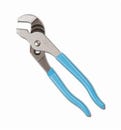 Channellock® 426 Tongue and Groove Plier, 7/8 in Nominal, 3/4 in L C1080 High Carbon Steel Straight Jaw, 6-1/2 in OAL
Channellock® 426 Tongue and Groove Plier, 7/8 in Nominal, 3/4 in L C1080 High Carbon Steel Straight Jaw, 6-1/2 in OAL
 Stanley® 33-716 FatMax® Reinforced Tape Rule with BladeArmor®, 16 ft L x 1-1/4 in W Blade, Mylar® Polyester Film Blade
Stanley® 33-716 FatMax® Reinforced Tape Rule with BladeArmor®, 16 ft L x 1-1/4 in W Blade, Mylar® Polyester Film Blade
 Arrow™ HT50 Professional Heavy Duty Tomahawk Hammer Tacker, Flat Crown Staple
Arrow™ HT50 Professional Heavy Duty Tomahawk Hammer Tacker, Flat Crown Staple
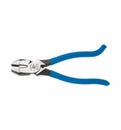 Klein® D2000-9ST 2000 Heavy Duty Rebar Work Cutting Plier, 9-3/8 in OAL
Klein® D2000-9ST 2000 Heavy Duty Rebar Work Cutting Plier, 9-3/8 in OAL
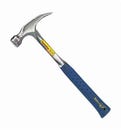 Estwing® E324S Framing Hammer, 16 in OAL, Smooth Surface, 24 oz Steel Head, Straight Claw, Steel Handle
Estwing® E324S Framing Hammer, 16 in OAL, Smooth Surface, 24 oz Steel Head, Straight Claw, Steel Handle
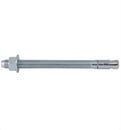 DeWALT® Power-Stud®+ Powers® 7449SD1-PWR Expansion Wedge Anchor, 3/4 in dia, 10 in OAL, 7-1/2 in L Thread, Carbon Steel, Zinc Plated
DeWALT® Power-Stud®+ Powers® 7449SD1-PWR Expansion Wedge Anchor, 3/4 in dia, 10 in OAL, 7-1/2 in L Thread, Carbon Steel, Zinc Plated
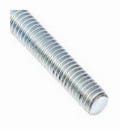 BBI® 777037 All Threaded Rod, 3/8-16, 12 ft OAL, Steel Alloy
BBI® 777037 All Threaded Rod, 3/8-16, 12 ft OAL, Steel Alloy
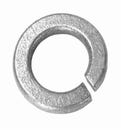 BBI® 754072 Medium Split Lock Washer, 1/2 in Nominal, 18-8 SS
BBI® 754072 Medium Split Lock Washer, 1/2 in Nominal, 18-8 SS
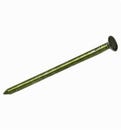 Primesource® 8CTDSKR Sinker Nail, 17/64 in, 2-3/8 in L, 9 ga, Vinyl Coated, Smooth Shank
Primesource® 8CTDSKR Sinker Nail, 17/64 in, 2-3/8 in L, 9 ga, Vinyl Coated, Smooth Shank
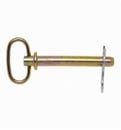 Campbell® T3899724 Hitch Pin, 1/2 in dia, 4-1/4 in L Usable, Forged Steel, Zinc Plated with Yellow Chromate, 5 Grade
Campbell® T3899724 Hitch Pin, 1/2 in dia, 4-1/4 in L Usable, Forged Steel, Zinc Plated with Yellow Chromate, 5 Grade

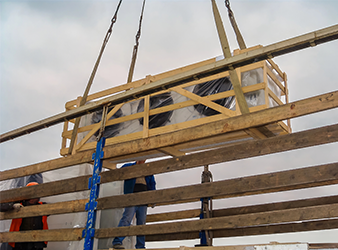
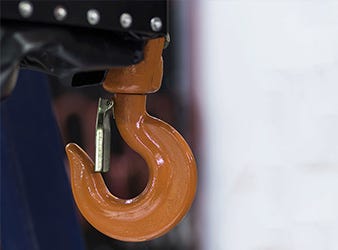
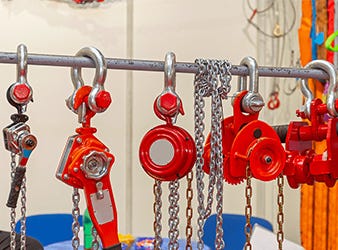


Comments (0)